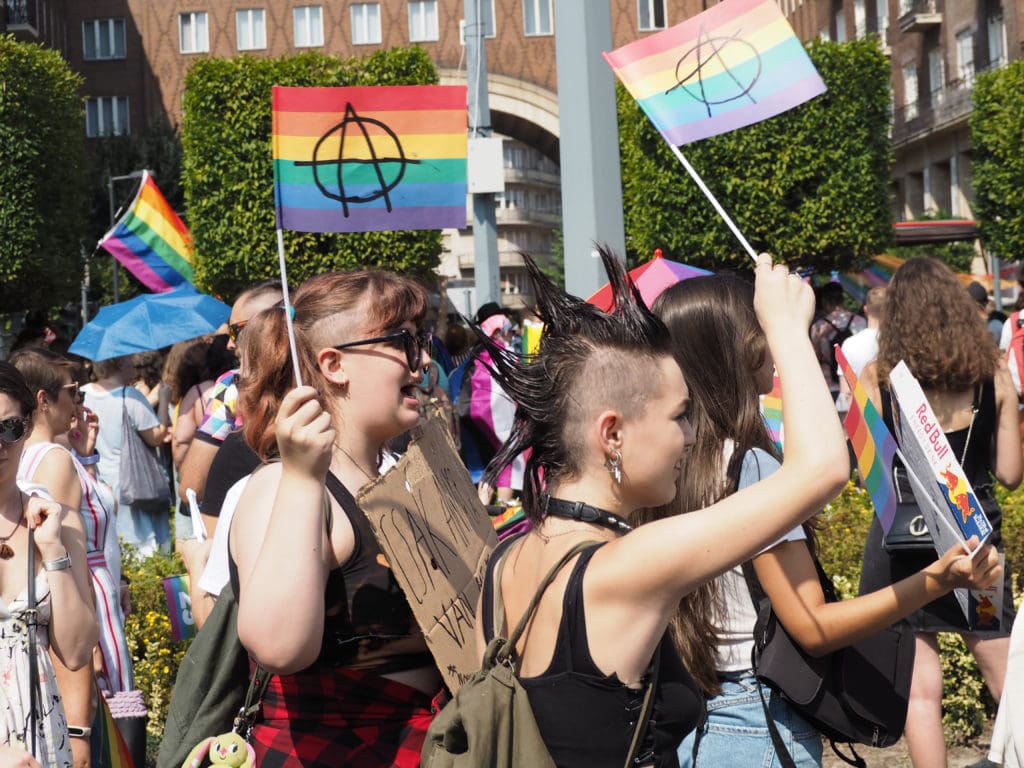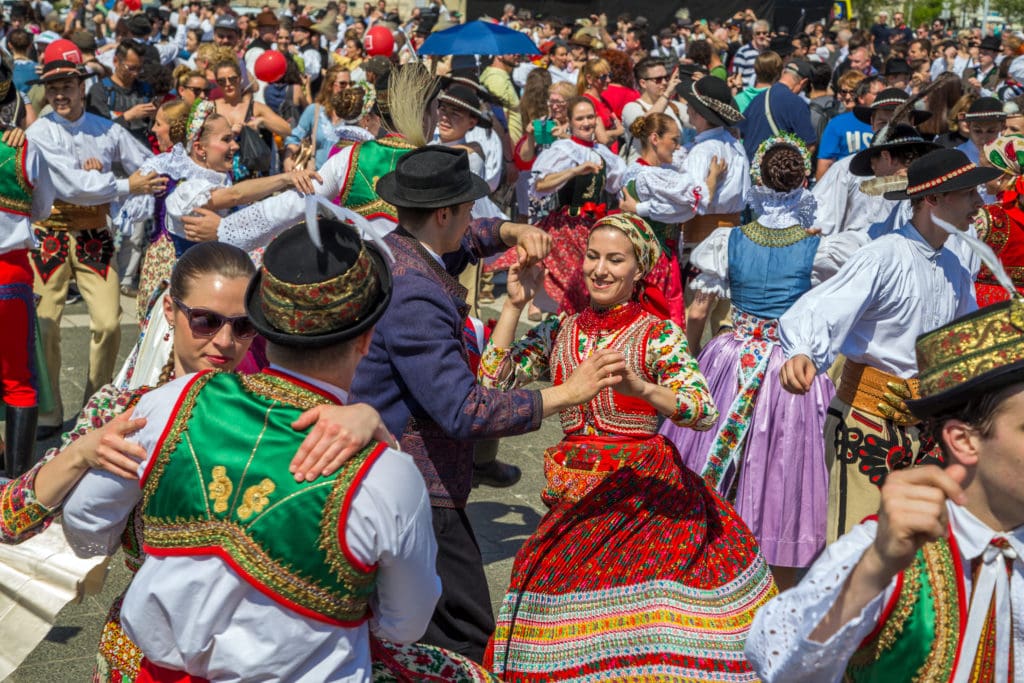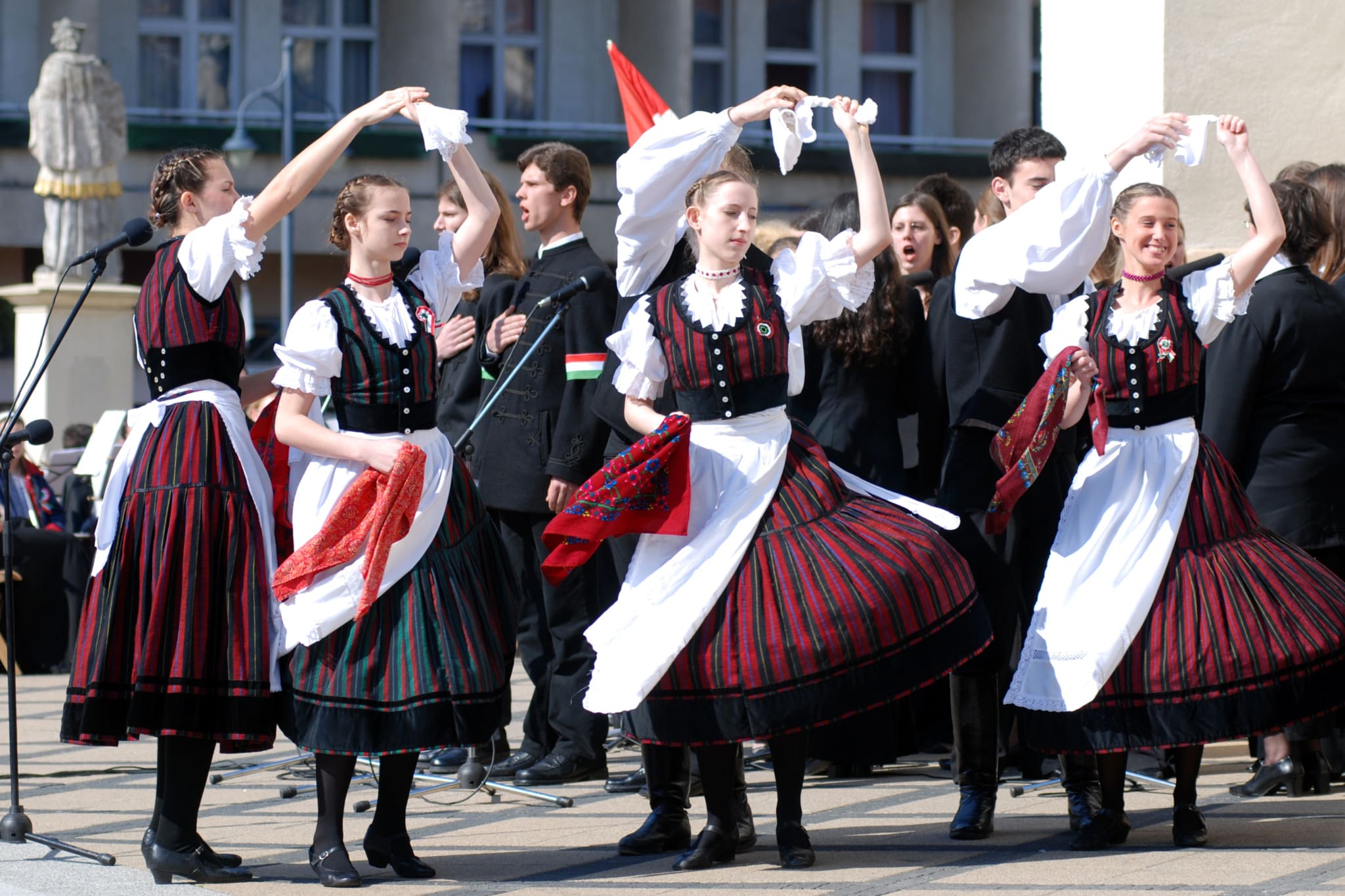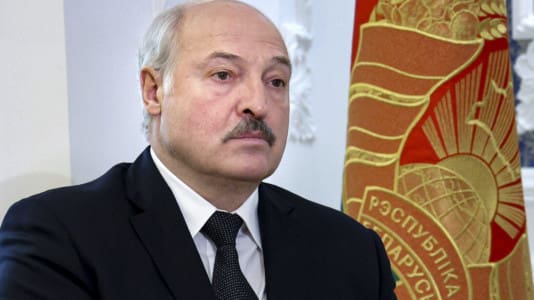It is increasingly apparent that there is no element of traditional culture that is immune from the intrusions of gender ideology — not even the one that has been constructed based on the dynamics and interactions between the two genders of a man and a woman. Folk dance is not some sideline entertainment in Hungary, but a national institution that had thrived during the decades of communism, and among few other cultural expressions, has retained its popularity among Hungarian youth.
In response, a group of Western-European-educated dance instructors have come up with an idea to import radical gender ideology into Hungary, and implant it in the heart of its traditional culture.
One of the leaders of the LGBTQ folk-dance group that has just opened in Budapest, Júlia Vavra, justified her new gender-bender dance group by complaining about sexism in traditional folk culture. She claims that the content of some of the traditional lyrics, where village girls and young men are teasing one another with comical remarks, contains language that does not stand up to modern standards of gender equality. Vavra was studying choreography in Amsterdam before returning to the Hungarian capital.

Another founder of the group, Dávid Farkas Gergő, has moved back to Hungary from Stockholm, but seems to have brought with him the now prevalent gender ideology from a Sweden that was once one of the most prosperous and safest places on earth into a crime-ridden, near-collapsing society.
When interviewed about the LGBTQ dance project, he remarked that first the time he heard about the Hungarian “homophobic law”, he felt terrible. Farkas was referring to the proposed new child protection laws that would raise penalties for child abuse and would also ban the spread of LGBTQ propaganda by NG)s in schools and kindergartens.
While Farkas is the founder of the queer dance group, he was subsequently joined by a third dancer, Balázs Oláh, who studied dance in Salzburg, Austria. All three have returned to Hungary a few months ago and started their joint project in Budapest.
Farkas says he thinks that some political circles are trying to usurp parts of traditional culture, and that draws people away from art.
“If folk-art is so politicized, then it generates a counter reaction. As a result of this, many are choosing European identity,” remarked Farkas. According to Vavra, folk dance is characterized by “heteronormative” structures, in which men are leading and women are following or are forced into less dominant roles. This is why she thinks that it is important that anyone should try themselves in “both [gender] roles.”
While Farkas complains about the over-politicization of art, she goes on to lecture others about how terrible the government’s child protection agenda is, how traditional gender roles are oppressive and that one should therefore switch from a national to a European identity. Such inconsistencies do not seem to bother the group’s leaders who seem to rail against the tradition in Hungarian folk-dance that when a boy chooses a girl, she is obliged to comply and follow his instructions because it would be impolite to say no. Farkas claims that girls must submit to men, and this attitude is then transferred to other aspects of society.

It is a shame that no member of the group had gone into the trouble to observe the meetings of real folk dance groups within traditional communities, where the traditional roles have been reinterpreted and given a new content long before the founders of the LGBTQ dance group were born. Today, most such folk art and dance groups are led by women, and the near-medieval characterization of these communities, where women allegedly must do as they are told by man, borders on offensive and belittling.
With the aim of combatting gender-archaisms in Hungarian society, they are refusing to refer to man and women in their dance group, and call participants “lead” and “leader” instead. They also have provisions for participants, who, despite joining a folk dance group, do not wish to be touched. Farkas admits that they have not encountered such a person yet, but they do have such provisions in place anyhow.
“The LGBTQ community and ourselves believe that anything is permitted, but all should consent with a sober mind.” This, claims Farkas, is the basis of sexual freedom.
The leaders of this virtue-signaling new group made up of political activists are trying their best to paint a dark picture of traditional folk dance. The group is essentially implying that before they stepped in with their own reinterpretation of folk dance, that groups across Hungary were forcing non-consenting women to partake in a backwards ritual, and only by embracing LGBTQ ideology, can society be liberated from this ongoing barbarism.
Folk-dance, in fact, has always been where men and women have learned the rules of interaction between genders, and the limits of what is permitted in an observant society. Furthermore, during the restrictive decades of communism, folk dance meetings were more often than not places of dissent, where after the official program, politics and non-conformist ideas were freely discussed.
The self-righteous attitude demonstrated by the founders of the LGBTQ dance group towards traditional values and communities is sadly typical of youth indoctrinated in Western educational and art establishments, as the present case clearly demonstrates. Instead of holding communities together, as these folk-art groups were meant to do, they are introducing divisions, the kitsch of a European identity, and dismissive attitudes towards national and historic values.






